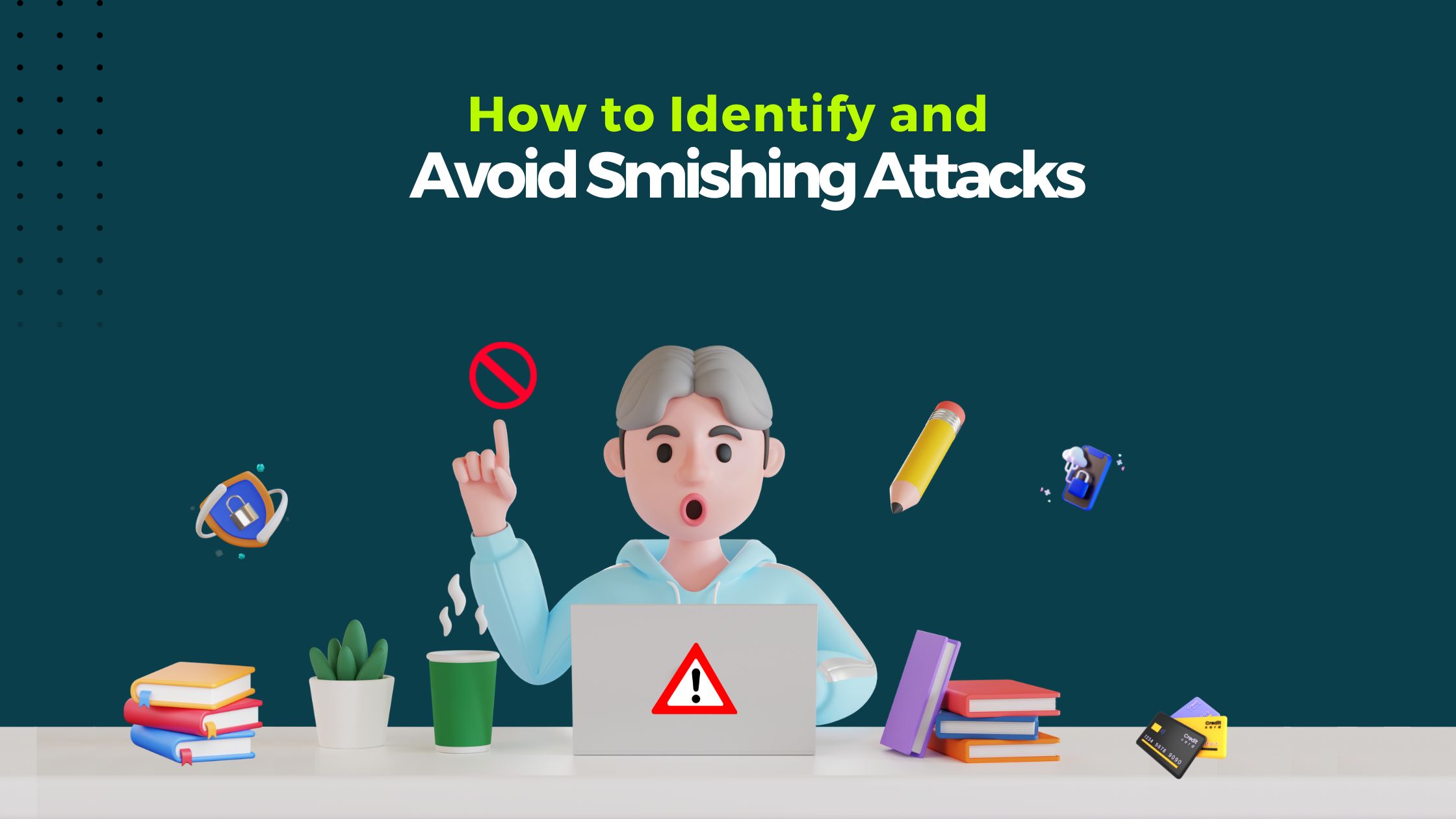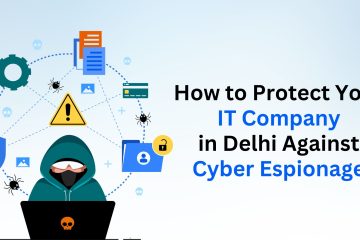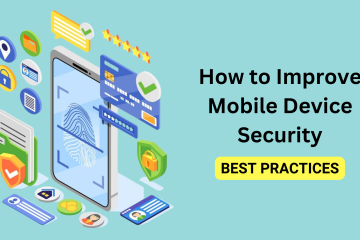Have you ever received a message from your bank asking for an OTP to upgrade your credit card limit only to realize later that it was a smishing attacker trying to hack your bank account?
Smishing attacks are the most difficult to detect, as the attacker sends messages that appear to be genuine and may even have your personal details, like the last four digits of your credit card number. This has become increasingly common in Indian businesses of all sizes. To avoid falling victim to a smishing attack, it is important for business owners and their employees to identify and flag suspicious messages before data is hacked.
As the leading IT software company in Delhi, we’d like to help you identify and avoid smishing attacks through this blog.
What is Smishing Attack and How Does it Work?
Smishing Attack, also known as SMS phishing, is an increasingly common cyber-attack that targets individuals through text messages. In a smishing attack, an attacker poses as a reputable source, such as a government agency, big retailer brand, ecommerce platform, social media channel, or bank. The message typically contains an OTP, a link, or a phone number that the recipient has to forward, click or call to take necessary action, such as upgrading the credit card limit, verifying account details, or resetting a password.
However, the link is designed by the cyber attacker to trick the individual into revealing their personal information or to install malware on their mobile device. For instance, the link might lead to a fake application that captures the user’s credit card CVV and password, which can drain money from the bank account.
In the business world, the text may seem like it was shared by a manager, system administrator, or a customer, making it very difficult even for the employees of IT software company in Delhi to identify the attack.

How to Identify Smishing Attack
Smishing attackers use sophistication and smartness to hack individuals and businesses. They are difficult to identify, so employees must stay cautious while receiving and sending texts. As the IT software company in Delhi, we have trained our employees to identify and report the following red flags of smishing attacks:
Urgent Text
If the text has a sense of urgency and asks you to take immediate action, it should be treated as a smishing attack red flag. Smishing texts often take the form of last-minute reminders to update information before a deadline. For instance, the text may say, “update your KYC by clicking on this link, as your UPI will be blocked tomorrow.”
Unrecognized Sender
In many smishing texts, the sender’s contact number and details may appear genuine at first glance. However, two numbers might be misplaced or replaced. We encourage our employees to double-check the sender’s number before replying to the text or taking action. We also have an internal application and email system where most communication occurs. Ensure you exchange data and information across company departments through a reliable communication system like Skype, WhatsApp, Microsoft Teams, and Official Email Address.
Grammatical Errors and Typos
Poor grammar and typos are the number one identification marks of scammers. Even the slightest doubt about the format of the text mustn’t be ignored. Errors are common when attackers send messages posing as banks. Example: State Bnak of India vs. State Bank of India.
Requesting for Sensitive Data
As per RBI rules, no bank, eCommerce platform, or retailer will ever request to reveal sensitive information, such as bank account number, username, password, credit card CVV number, or mailing address over text. And if you receive such a message, it should be immediately reported, marked spam, or ignored.
Asking to Click a Link or Call a Number
Many smishing attackers ask users to click a link to claim a reward or call a number to register for a free gift, which either installs malware in the device, redirects the user to a phishing website, or connects them to a scammer. The text’s link may look legitimate, similar to your bank website, or the caller may pose as the bank manager asking for OTP to upgrade EMI tenure.
Therefore, it is important that you or your employee communicate such details only via an official bank number or mobile application, face-to-face, or via contact numbers provided by genuine people.
How to Avoid Smishing Attacks
Being a .Net development company in Delhi, we handle a huge amount of customer information and confidential data daily. In addition to creating awareness among our employees, we have taken several measures to protect our devices from smishing attacks.
Internet Security and Anti-Virus Software
Antivirus software can protect your systems and database against all kinds of cyber-attacks, including smishing. Good quality anti-virus solutions, like Kaspersky, Norton, and ESET internet, actively detect and remove malicious threats. Ensure your internet security system is always up-to-date on all company and personal devices.
Stay Cautious When Receiving and Sending Text Messages
Use only reliable modes of communication to send and receive data files, such as registered email addresses, Skype, WhatsApp, or the company’s internal application. Always verify the legitimacy of the texts before responding, such as contacting the bank or organization on their official number rather than clicking on the link or calling the number texted.
Use a Mobile Device Management System (MDM)
Mobile Device Management System secures company devices, regardless of where it is located, and protects them against all kinds of attacks. The MDM solution regulates incoming messages, blocks suspicious content, alerts users of any suspicious activities, and prevents users from accessing unauthorized and unencrypted websites and files.
Enable Two-Factor Authentication (2FA)
Two-factor Authentication adds an additional layer of protection to office systems and mobile devices. It requires users to process two methods of authentication codes to access the system, data, and accounts. The first layer of authentication might be a password or pin, while the second layer could be a biometric factor, smart card, physical device, or an OTP sent to the registered user.
For example, when you try to log in to your Google account from a new device, Google will send a notification to your verified phone number, linked mobile device, and email to confirm access.
Smishing attacks are a growing concern in India. As one of the top software companies in delhi, we take all necessary actions and measures to protect our and our client’s data and information from attackers. Note that we will never send any text messages to collect your information. We only use our official email address for any correspondence. Stay safe. Secure your data.



0 Comments